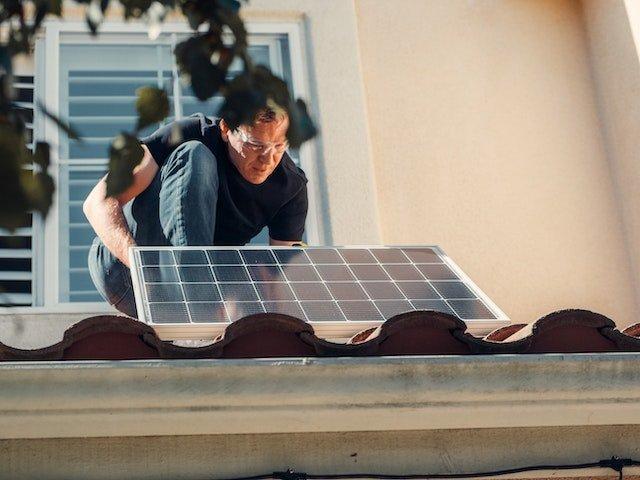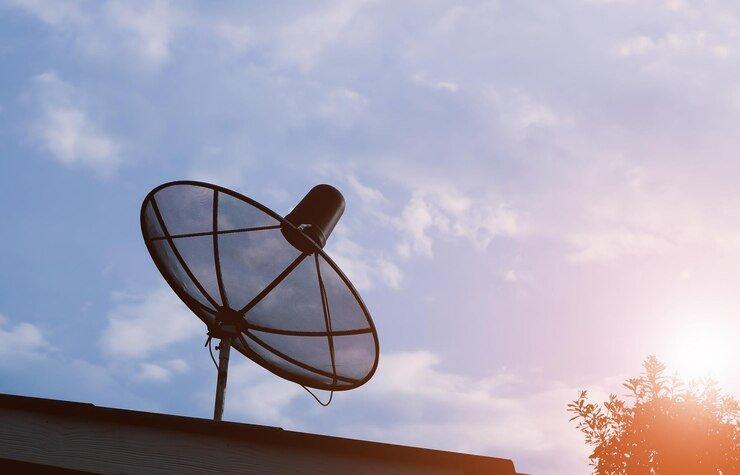With a solar-powered TV, you get off-grid and remote entertainment. It offers unlimited fun even when there’s a blackout. So, when there is no power, and you have a solar-powered TV, you know you won’t get bored.
Don’t worry about how long you are watching the television because the energy used to power the TV is generated sustainably.
So, if you are thinking about getting a solar-powered or solar generator-powered TV and are confused about the decision, you have come to the right place.
This post will discuss everything about solar-powered TV, from the reasons to purchase them to how many panels you need to run a TV.
Scroll down to get ready for a sustainable way of entertainment.
Table of Contents
How Much Energy Does TV Use?
The amount of electricity the TV use can be easily determined by calculating the time the TV is being turned on.
Before switching from traditional TV to solar-powered TV, it’s essential to calculate the energy your TV will consume. For this, you must determine the TV’s usage and kilowatt.

For instance, if you have a plasma TV[1] and use it for three hours, it will consume 280 to 500 watts. Television’s make and model also determine its typical power consumption.
While a plasma TV consumes 300-watt energy, a 32-inch LED consumes 150-watt energy. In addition, the television’s technology and features can also decrease or increase the amount of power it consumes.
How Many Solar Panels Do You Need for TV?
How many solar panels do you need for the TV? Well, depending on the wattage of the TV, the number of solar system panels can be calculated.
If you want to run a solar-powered TV without issues, determine the solar panel’s energy production amount and energy consumption rate.
In addition, you need to remember the type of panels and technology used. That’s because specific solar panels come with better efficiency and technology.
The latest panels are more efficient than the old ones. They can efficiently take sunlight and produce up to 20% green energy. To calculate the number of panels needed to run a TV, you first need to calculate the electricity the TV needs.
For example, if you watch TV for 6 hours a day, then you can follow this simple calculation:
A 32-inch 150-watt LED TV can consume up to 22.5-kWh a month on 6 hours of viewing daily. That means you need around two 100-watt solar system panels to watch uninterrupted television shows for 6 hours daily.
But if you have a plasma 56/72 inch TV, it requires 300 watts. Therefore, you need to install three solar panels of 100-watt.
Reasons to Buy Solar Power TV
Are you still not sure whether you should get a solar power TV? Continue reading to make an informed decision:
#1 Eco-Friendly
Solar-powered TV is an eco-friendly way of entertainment. So, even if you decide to binge-watch television for a long time, you will not feel guilty about increasing your utility bill.
Instead of traditional electricity, solar-powered TV uses clean energy from solar system panels. It also reduces carbon footprint and decreases the overall utility bill.
#2 Save Money
Solar-powered TV can help you save significant money on the monthly electricity bill. No matter how long you wish to watch television, your monthly power bill will not dig a hole in your pocket.
#3 Unlimited Entertainment During Blackouts
Blackouts can be a serious deal breaker, especially when watching your favorite show. But blackouts won’t be irritating once you have switched to solar power TV.
You can watch your shows uninterruptedly without worrying about electricity shutdown or routine maintenance disturbing your entertainment.
#4 Portable
One of the most significant advantages of solar-powered televisions is that they are portable. With a travel-friendly TV, you can easily watch your favorite shows anywhere you can access sunlight.
So, get a portable solar panel-powered TV and make your camping trips more fun. You can also organize fun picnics or outdoor movie nights; the possibilities are endless with portable solar panel TV.
Steps to Set Up Solar Panel LED TV
When you get a solar-powered LED TV, the kit will contain the following:
- Solar cable
- Remote control
- Solar panel to keep battery charged
- Antenna with long cable
- Battery
In case you have got a new Cello solar-powered TV, and you can’t find an installer, here is how you can set up the TV in just five easy steps:
Step 1: Start by installing the solar panel at the place from where it can get maximum sunlight.
Step 2: The next step requires you to use a solar cable. Connect the solar panel to the TV by plugging it into the Solar-In port.
Step 3: Use the switch and remote control to turn on the TV.
Step 4: Once you have turned on the television, plug the intelligent antenna into the TV port. For a better signal, you can place the antenna outside the home. If the antenna turns green, it’s adequately plugged.
Step 5: Use the guide on the screen and remove it to use your Cello solar-powered TV.
Are Solar Powered TVs Worth It?
It depends on whether you want to purchase a solar-powered TV. But it’s worth it, considering that it helps in reducing electricity bills and offers nonstop entertainment.

Solar-powered televisions will make sense to you if you live in an area with continuous power cuts. Or if you want entertainment while camping in an RV. Check out the following article, if 100 Watt Solar Panels can work for RVs.
Here’s what makes solar-powered TV a good option:
#1 The Cost
While solar-powered TVs have become common, fully solar-powered TVs are still under development. But this kind of television is inexpensive and unlikely to break the bank.
The cost of buying a solar TV is much less than a traditional TV. That’s because solar-powered TV will not increase your electricity bill. They make an excellent long-term investment.
#2 The Quality
Besides using clean energy, the best solar panels powered TVs are also known to have high-quality LCD screens. So, even if you watch television for a long time, it won’t strain your eyes or make them watery.
The quality of the TV indeed depends on the specifications. But in general, Cello solar-powered TVs are as good as new.
#3 Durability
Lastly, solar panels powered TVs are durable, which saves you from the hassle of replacing the TV set too often. They can last for a very long time without constant repair.
Depending on the sun exposure, the solar panel gets the battery life of the TV changed. With a fully charged battery, you can watch a few shows. The batteries will start charging automatically as soon as the sun comes out again.
Batteries Needed to Run the TV
It would be best to have a battery to enjoy uninterrupted entertainment when the sun has gone down. You can store additional energy in the battery and use it during evenings and nights.

Consider purchasing a single powerful battery or a set of batteries to store sufficient energy for running a TV on solar. Before purchasing a solar panel and battery, you need to consider the solar panel’s power storage and energy production rate.
How Many Batteries Required to Run a TV
The number of batteries you need to run a solar panel-powered TV depends on the energy consumption and TV wattage rate.
More giant televisions will consume more energy compared to smaller sets. For instance, if you have a 60-80 watts TV, you will need at least one battery of 110v-1000w to watch uninterrupted television for 6 hours.
Conclusion
As you have reached the end of this post, we assume you know how to set up a solar panel-powered TV and what makes these TVs a good choice.
Solar power generates energy from sunlight, which is considered a renewable energy source. It will not increase your utility bill regardless of the time you watch TV.
Remember to purchase batteries to store the solar panel’s energy to watch television during evenings and nights.

